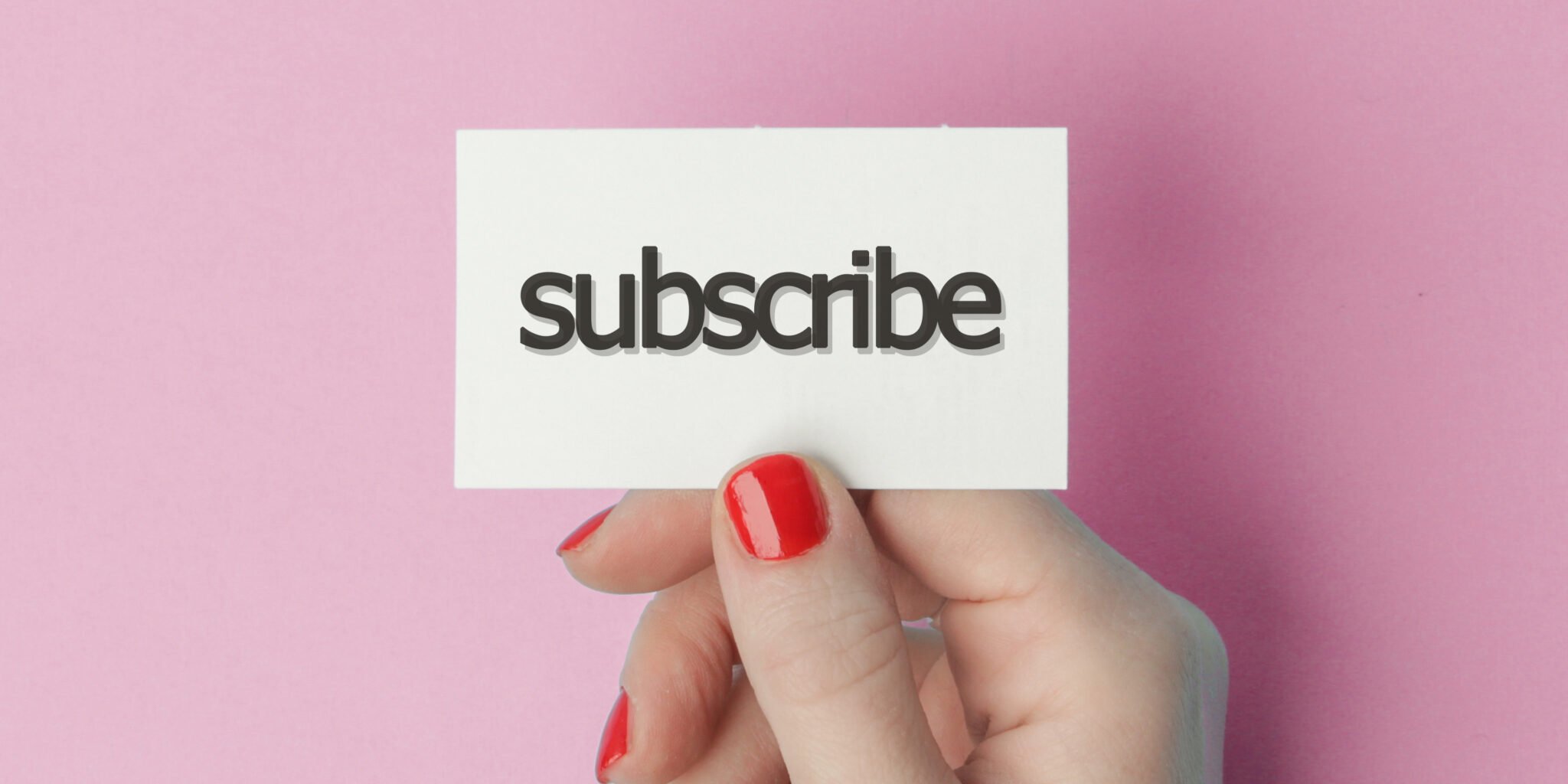FEATURED ARTICLE
The Rise of Subscription Services and the Subscription Economy

Ainsley Bilton
July 31, 2023 •5 min read
TABLE OF CONTENTS
The Subscription Economy: A New Way of Consumption
The Benefits of Subscription Services
Challenges and Sustainability
Challenges and Solutions in the Subscription Economy
Impact on Different Industries
Future Trends in the Subscription Economy
There has been a significant shift in recent years in the way consumers access and enjoy products and services. The traditional model of one-time purchases is gradually being replaced by the booming phenomenon of subscription services. From streaming platforms like Netflix and Spotify to meal kit deliveries and cloud-based software, the subscription economy has transformed the way businesses and consumers interact.
When did this model of business take over our marketplace and what are the underlying principles of the subscription economy that make it so successful?
The Subscription Economy: A New Way of Consumption
The subscription economy can be defined as a business model where consumers pay a recurring fee at regular intervals in exchange for ongoing access to products or services. This shift has been fueled by several key factors, including changes in consumer preferences, technological advancements, and the desire for a more personalised and convenient user experience.
Evolving Consumer Preferences: In the digital age, consumers value convenience and instant gratification. Subscription services cater to these demands by providing hassle-free access to a wide range of products and services. The pay-as-you-go model allows consumers to avoid upfront costs and commitments, making it an attractive proposition.
Technological Advancements: The rise of the internet and advancements in digital technologies have paved the way for the subscription economy. Seamless online transactions, mobile apps, and cloud-based services have made it easier for businesses to offer subscriptions and for consumers to manage their subscriptions effortlessly.
Personalisation and Curation: Subscription services often use data-driven algorithms to tailor recommendations and content to individual preferences. This level of personalisation enhances user engagement and satisfaction, keeping customers invested in the services they use.
The Benefits of Subscription Services
Both consumers and businesses can reap numerous benefits from the subscription economy.
For Consumers:
- Convenience and Flexibility: Consumers can access products and services on-demand, with the freedom to subscribe, upgrade, or cancel at any time.
- Cost-Effectiveness: Subscriptions often provide better value for money, as consumers gain access to a wide range of offerings at a fixed price.
- Discoverability: Subscription platforms introduce users to new products and services they may not have encountered through traditional purchasing channels.
- Seamless Experience: Automatic billing and digital access eliminate the need for physical transactions, making the entire process hassle-free.
For Businesses:
- Predictable Revenue: Recurring subscriptions provide a steady and predictable cash flow, enabling businesses to plan for growth and expansion more effectively.
- Customer Retention: With ongoing subscriptions, businesses are motivated to focus on maintaining high customer satisfaction levels to reduce churn rates.
- Valuable Customer Data: Subscription services gather valuable data on customer preferences and behaviors, enabling businesses to refine their offerings and marketing strategies.
- Lower Barriers to Entry: The subscription model lowers the barriers for consumers to try out new services, leading to increased trial rates and potential long-term customers.
Challenges and Sustainability
While the subscription economy has seen exponential growth, businesses need to address several challenges to ensure long-term sustainability:
- Saturation: As more businesses adopt the subscription model, competition intensifies, and differentiation becomes crucial to retain customers.
- Churn Management: High churn rates can impact revenue and growth. Providing exceptional customer service and continuously improving the offering is essential to reducing churn.
- Price Sensitivity: Consumers may be hesitant to commit to multiple subscriptions if they perceive the costs as excessive. Striking the right balance between pricing and value is crucial.
Examples of Successful Subscription-Based Businesses
- Netflix: One of the pioneers of the subscription economy, Netflix revolutionised the entertainment industry by offering a vast library of movies and TV shows on a subscription basis. The company's data-driven content curation keeps users engaged and satisfied, leading to impressive customer retention rates.
- Amazon Prime: Amazon's subscription service bundles multiple benefits, including free shipping, access to streaming content, exclusive deals, and more. Amazon Prime has garnered millions of loyal subscribers, driving consistent revenue for the e-commerce giant.
- Dollar Shave Club: This subscription-based razor company disrupted the grooming industry with its affordable, convenient, and personalised shaving products delivered directly to customers' doorsteps on a regular basis.
- Salesforce: In the software industry, Salesforce adopted the subscription model for its cloud-based customer relationship management (CRM) software. This approach allows businesses of all sizes to access powerful tools without the need for costly upfront investments in software licenses and hardware.
Challenges and Solutions in the Subscription Economy
- Subscription Fatigue: With the growing number of subscription services available, consumers may experience "subscription fatigue," leading to over-commitment and eventual cancellations. To address this, businesses must focus on delivering exceptional value and unique experiences to differentiate themselves from competitors.
- Customer Churn: High customer churn rates can hinder a business's growth and profitability. By continuously improving the product or service, offering attractive incentives, and providing excellent customer support, companies can reduce churn and retain subscribers for the long term.
- Pricing and Value Perception: Striking the right balance between pricing and perceived value is crucial. Businesses must clearly communicate the benefits of their subscription offerings to potential customers and regularly reassess their pricing strategies to remain competitive.
- Data Privacy and Security: Subscription services gather vast amounts of customer data, which must be handled responsibly and securely. Businesses must prioritise data privacy and ensure compliance with relevant regulations to build trust with their subscribers.
Impact on Different Industries
- Media and Entertainment: The subscription economy has transformed how we consume media, with streaming services dominating the landscape. Traditional cable TV is facing significant challenges as consumers prefer personalised and on-demand content through platforms like Netflix, Hulu, and Disney+.
- Retail and E-commerce: Subscription boxes and membership programs have gained popularity in the retail sector. Companies like Stitch Fix (clothing), Blue Apron (meal kits), and BarkBox (pet products) offer personalised, curated experiences that attract loyal subscribers.
- Software and Technology: The software industry has seen a massive shift toward cloud-based subscription models, offering users greater accessibility and regular updates without the hassle of purchasing and maintaining licenses. Emma also operates on a subscription based model with 4 different tiers of subscriptions for users to choose from. With each tier you unlock more of Emma's money management features to allow you to make the most of your finances! Whether you are a free user or a member of our Ultimate subscription there is an Emma subscription to suit your personal finance needs.
Future Trends in the Subscription Economy
- Vertical Integration: To enhance the customer experience and reduce reliance on third-party vendors, we may see more companies adopting vertical integration. By offering end-to-end solutions within their niche, businesses can build stronger relationships with customers.
- Bundling and Partnerships: To combat subscription fatigue and retain customers, companies may bundle their services with complementary offerings from other businesses. This approach creates a win-win situation for both the company and the consumer.
- Sustainable and Ethical Subscriptions: As environmental concerns grow, consumers are increasingly drawn to companies that prioritise sustainability. Eco-friendly subscription services, such as reusable product refills and carbon offset options, are likely to gain traction.
The subscription economy has disrupted traditional business models, reshaping industries and consumer behavior. By understanding the benefits, challenges, and best practices associated with subscription-based businesses, companies can stay ahead in this ever-evolving landscape.
Embracing technological innovations, prioritising customer needs, and fostering long-term relationships with subscribers will be key to thriving in the subscription economy of the future. As consumers continue to seek convenience and personalisation, subscription services will remain a dominant force in the marketplace for years to come.
You may also like
Check out these related blog posts for more tips
© 2025 Emma Technologies Ltd. All Rights Reserved.
Emma is registered and incorporated in England and Wales.
Emma Technologies Ltd is an appointed representative of RiskSave Technologies Ltd, which is authorised and regulated by the Financial Conduct Authority (FRN 775330).
Payment services (Non MIFID or Deposit related products) for Emma Technologies Ltd are provided by The Currency Cloud Limited. Registered in England No. 06323311. Registered Office: Stewardship Building 1st Floor, 12 Steward Street London E1 6FQ. The Currency Cloud Limited is authorised by the Financial Conduct Authority under the Electronic Money Regulations 2011 for the issuing of electronic money (FRN: 900199). For more detail on how your money is protected please see here. You can also find Currency Cloud's Terms of Use here.
Emma Technologies is an Introducer Appointed Representative of Quint Group Limited and not a lender. Quint Group Limited is authorised and regulated by the Financial Conduct Authority (Firm Reference Number 669450). Monevo Limited is an Appointed Representative of TransUnion International UK Limited. TransUnion is authorised and regulated by the Financial Conduct Authority (Firm Reference Number 737740). Emma Technologies introduces customers first to Quint Group Limited, as a licensed credit broker, who then refers on to Monevo Limited.
Emma is registered with the Financial Conduct Authority under the Payment Services Regulations 2017 for the provision of payment services.
Financial Conduct Authority Reg Nr: 794952.
Company Registration Number: 10578464.
Data Protection Registration Number: ZA241546.
All testimonials, reviews, opinions or case studies presented on our website may not be indicative of all customers. Results may vary and customers agree to proceed at their own risk.
Resources: Cancel subscriptions, Cashback offers, Who charged me, Rent Reporting, Budgeting, Investment universe, Emma vs Moneyhub.
Featured cashback offers: Samsung, SimplyCook, NordVPN, Audible, M&S Homeware.









